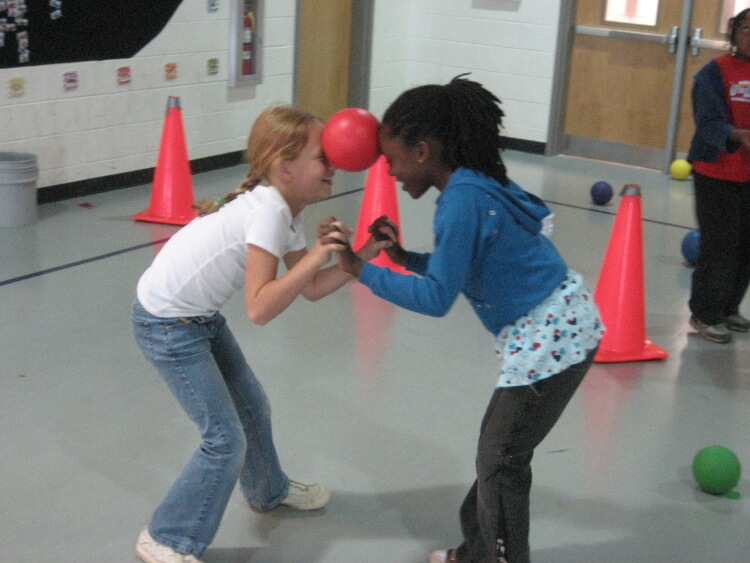“What are we playing in gym today?” is in all likelihood the first question asked every day by every class in every gymnasium across the country and possibly the entire world. It may be an overly simplistic answer to the lack of respect for our content area, but conditioning students to ask, “What are we learning in PE today?” instead of “What are we playing in gym today?” would mark a small step toward educating the next generation about the merits of physical education.

However, it then becomes incumbent upon us to be able to provide an answer to this new and improved question, each and every time a student enters our classroom. Our classroom, the gymnasium, while different in size and equipment, needs to look, feel, and operate like a learning environment. Allowing the educational hierarchy to view us as different, and more often than not as less important, guarantees that we will continue to remain educationally second-class despite the rising need for PE.
So what would it look like if we operated like a typical academic classroom, yet still stayed true to the physicality of our domain?
I’m reminded of my final interview with the Assistant Superintendent prior to receiving my teaching position. His question was, “Your master’s degree is in Biomechanics, why are you applying for a physical education teaching position?” My response was immediate: I said, “Because physical education should be taught as a science.” The next question was “Your degree is in secondary education, why are you applying for an elementary position?” To which I answered, “Because the change needs to start at the beginning.” After the interview, I thought about those answers that came without thought and realized that I truly believed in them. Today, not only do I believe that physical education should be taught as a science, I also believe it should be taught through the English Language Arts (ELA), and Mathematical disciplines as well. And I believe we need to start in the earliest years.
The answer to teaching physical education as an academic discipline is to teach it the way we were taught physical education. Not the way that we were taught in elementary school or even in high school, but the way we were taught in our PETE programs. While the majority of physical education teachers probably entered the profession as an alternative to following their unattainable childhood goal of becoming a professional athlete, most exited their college years understanding the physics of movement, the physiology of exercise, and the philosophy, psychology, and sociology of sport. The mathematical word problems that we answered revolved around activity. The chemistry, biology, anatomy, and physiology tests we took dealt with human movement and exercise. Yet, once we go back into the public schools we claim not to understand how we can meet the Common Core Standards or even why we should be required to try.
As physical educators, we mustn’t confuse the old concepts of interdisciplinary education with teaching to the Common Core Standards. We are not being asked to teach English! We are being asked to teach Physical Education with English. We need to teach using academic concepts not because the Department of Education wants us to, but because it is how Physical Education should be taught in order for the next generation to become truly physically literate. We need children to learn how and why it is important to move by giving them literature that teaches and supports healthy lifestyles. We need to teach anatomy and physiology so that our students can identify specifically the relationship of the body to the exercises we do and the games we play. We need to highlight the scientific data behind the benefits of exercise to every aspect of life. Then, ironically, by teaching physical education we will be helping our students to reach the Common Core Standards.
We need to start developing a cognitive curriculum that mirrors the scope and sequence of our physical curriculum. We have two national PE standards that specifically require cognition.
Standard 2 – The physically literate individual applies knowledge of concepts, principles, strategies and tactics related to movement and performance.
Standard 3 – The physically literate individual demonstrates the knowledge and skills to achieve and maintain a health-enhancing level of physical activity and fitness.
In order to truly attain these standards, instruction and assessment through academic means is both warranted and beneficial. Additionally, the development and implementation of academic instruction and assessment needs to begin early so that students grow up seeing physical education as a learning experience and not as play time.
Please, don’t misunderstand me, I believe in maximum movement and 100% enjoyment. Academic instruction has to be given creatively and concisely but effectively.
Some strategies we can use for implementing academic instruction include:
- Alternating intense physical activity with short periods of cognitive instruction
- Using exit tickets for assessment
- Using concept, principle, strategy and tactical flash cards with students while they are waiting in line
- Assigning outside of class assignments
- Giving incentives for optional reading and writing assignment
I’m convinced that as an educational discipline, we will not survive in this new age of public education if we cannot demonstrate that learning is happening in our classrooms physically, cognitively and emotionally. I also believe that as a culture, we will not thrive if our children continue to become more and more sedentary. Knowledge, physical activity, and enjoyment in equal parts are the answer to creating a physically literate active adult.
